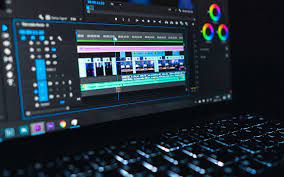
With the best video editing tips and tricks, beginners can make a big leap in their video editing skills and processes. Video editing is essential to get right, but it can be a time-consuming and painstaking process. Initially, you might also be at a loss for how to get the kind of edit you want. There's so much software out there and so many ways of working that it can feel overwhelming at first, but in this guide we suggest some video editing tips and tricks that can make a real difference for beginner video editors.
Always put the story first
When deciding what shot to use or where to cut when you're editing video – and in fact, with any decision you make in the editing process – always ask yourself how your choice will impact the story. That doesn’t just apply to fiction; all videos tell a story of some sort, even advertising.
If you’re adding an effect just because it looks flashy or choosing clips that look the nicest, know that this perhaps isn’t the best approach. In fact, these choices can often distract from the main point, which is to tell your story. Think about the message that you want the viewers to take from the video, what they should be thinking at each point, and what the best images and sounds to enhance that message would be.
Keep it short
There’s a reason that TikTok and Instagram Reels have become so popular. People have busier lives and more sources of media content than ever, and as a result attention spans aren’t what they used to be. The most common criticism received today by amateur films, and many professional ones too, is that they’re too long.
That doesn’t mean you should cut your half-hour masterpiece down to 30 seconds, but you can certainly improve it by removing anything extraneous. In video editing like in any kind of editing, it serves to really be brutal with your own work – if a line or a shot doesn’t add anything not stated elsewhere, try taking it out and see if the video flows better without it.
Learn to use colour
There are two colour editing processes in video editing: colour correction and colour grading. Colour correction involves adjusting your clips for basic consistency. Shots from two different cameras or ones taken in different lighting conditions can look jarringly different when placed one after another in an edit, and this can often be fixed by adjusting brightness, contrast, and white balance.
Colour grading, on the other hand, is a global process that gives a scene a particular «look.» If you’re serious about this, certain high-end editing applications have detailed grading interfaces, but many also make it easy for newcomers to achieve using LUTs, which apply a preset colour style. This can really change the feel of a video. Consider how the tone of your video changes if you give it a colder or warmer look, for example.